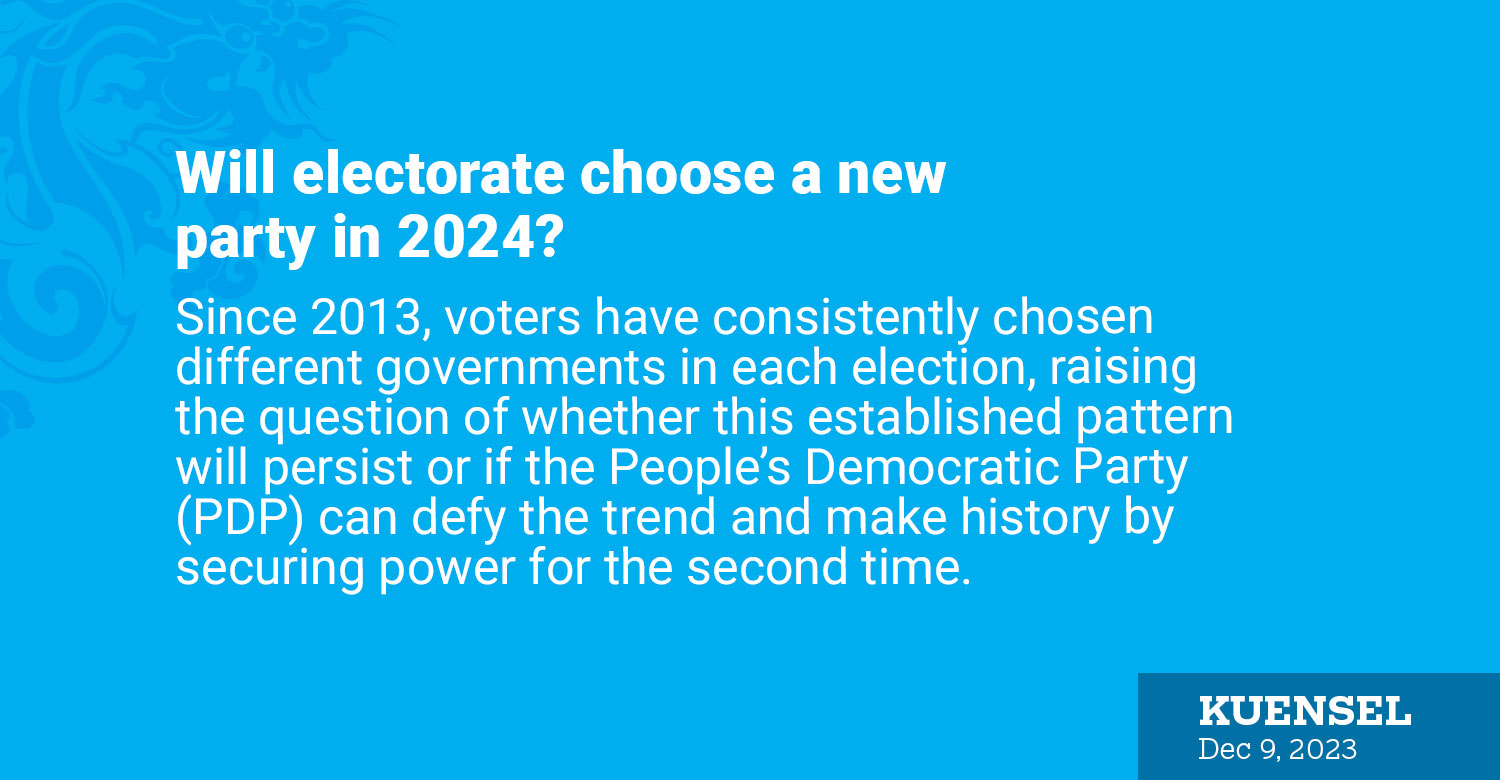
…in 2013 PDP, in 2018 DNT, and 2024?
Since 2013, voters have consistently chosen different governments in each election, raising the question of whether this established pattern will persist or if the People’s Democratic Party (PDP) can defy the trend and make history by securing power for the second time.
The PDP holds an advantage due to a resounding majority in the primary elections, but historical data suggests that the primary victor doesn’t always emerge as the overall winner.
In 2013, Druk Phuensum Tshogpa (DPT) clinched the primary with the highest votes and PDP came second. However, the PDP reversed the situation in the general round, forming the government.
In the 2018 election, Druk Nyamrup Tshogpa got the most votes, closely followed by DPT. Although DPT triumphed in 22 constituencies compared to 16 for Druk Nyamrup Tshogpa, voters preferred the latter in the general round.
Moving to 2023, the PDP emerged victorious in the primary round of the fourth National Assembly elections held on November 30.
The party secured 39 out of 47 seats, obtaining 42.5 percent of the total votes cast, with over 63 percent coming from electronic voting machines (EVMs).
The Bhutan Tendrel Party (BTP) secured 19.6 percent of the total votes, winning four constituencies with 61,331 votes—38,725 from EVMs and 22,606 postal ballots.
In the 2023–2024 primary elections, five political parties were in the field: BTP, PDP, Druk Thuendrel Tshogpa, Druk Nyamrup Tshogpa (DNT), and DPT.
The overall voter turnout was 63.03 percent, with 195,719 votes cast using EVMs and 117,443 through postal ballots. The electoral roll includes 497,058 voters, comprising 370,698 EVM voters and 126,360 eligible postal voters (124,273 in-country and 2,087 overseas).
2018
Turning to 2018, DNT secured the highest number of votes (92,722, 31.8 percent), leading the primary election results, with DPT closely following with 90,020 votes (30.9 percent). DNT won 16 constituencies, while DPT triumphed in 22.
The new party in the 2018 primary election, Bhutan Kuen-Nyam Party (BKP), secured 28,481 votes, the lowest in both EVM and postal ballots.
PDP secured 56,180 votes in the EVM but faced a significant deficit in postal ballots, receiving 23,703 votes. The party won in nine constituencies.
2013
In the 2013 primary round, DPT secured 44.5 percent of the total votes, PDP received 32.5 percent, DNT took 17 percent, and Druk Chirwang Tshogpa (DCT) secured 5.9 percent.
DPT won in 33 constituencies, while PDP claimed victory in 12. DNT prevailed in two constituencies in Trashigang and Chhukha.
DPT secured about 16,270 postal ballots, followed by PDP with 13,629, DNT with 7,163, and DCT with 881.
Over 55 percent of the 381,790 registered voters cast ballots in the primary round, with 172,890 voters casting ballots in person and about 37,940 using postal ballots.
As the general election approaches on January 9, 2024, public debates on candidate support is expected to intensify.
While some individuals remain publicly certain about their choice, the looming question remains: which party—the elephant or the horse—will secure more votes and shape Bhutan’s political landscape in the coming years.












